What Does a CX Product Manager Do in 2025
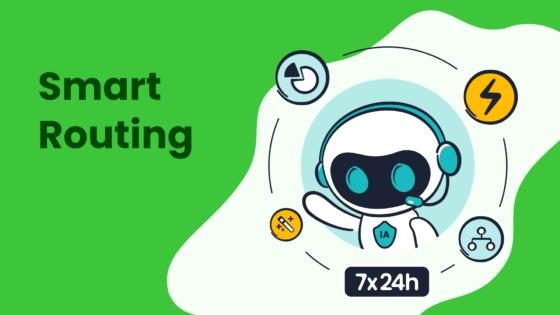
Customer experience (CX) has become a defining factor for business success, with 88% of companies prioritizing it in their contact centers. Over two-thirds of businesses now compete primarily on CX, a sharp rise from 36% in 2010. As a CX Product Manager in 2025, you play a pivotal role in meeting these demands. Your work ensures seamless customer journeys while advocating for innovative tools like Sobot's Voice/Call Center. By leveraging advanced cx products, you can optimize interactions, improve satisfaction, and bridge gaps in CX investment. Your role is essential in shaping customer loyalty and driving business growth.
The Role of a CX Product Manager in 2025
What Defines a CX Product Manager?
A CX Product Manager in 2025 is a professional who bridges the gap between customer expectations and business goals. You focus on creating seamless, personalized experiences across all touchpoints. Unlike traditional roles, your responsibilities extend beyond product development. You oversee the entire customer journey, ensuring every interaction aligns with the brand's promise.
Your role involves leveraging advanced tools like predictive analytics and AI to anticipate customer needs. For instance, predictive analytics can reduce product development cycles by 20% and boost customer satisfaction by 30%. These tools allow you to make data-driven decisions that enhance customer loyalty and improve business outcomes.
Strategic Importance in Customer Experience
In 2025, customer experience drives business success. Companies excelling in CX grow revenues 4% to 8% above market averages. As a CX Product Manager, you play a pivotal role in achieving these results. Your work ensures that customer satisfaction metrics like CSAT and NPS remain high, directly impacting revenue growth.

You also contribute to operational efficiency. By integrating tools like Sobot's Voice/Call Center, you can streamline communication and reduce response times. Features such as intelligent IVR and AI-powered voicebots help you deliver faster, more personalized support. This not only improves customer satisfaction but also strengthens brand loyalty.
How CX Product Managers Differ from Traditional Product Managers
Your role as a CX Product Manager focuses on the customer's perception of the brand, while traditional Product Managers prioritize product performance. You measure success through metrics like customer satisfaction and experience, rather than just sales or product quality.
Key differences include:
- Focus on Metrics: You monitor CSAT, NPS, and CES, while traditional managers track product performance.
- Customer-Centric Approach: You ensure every touchpoint enhances the customer journey, unlike traditional managers who focus on product features.
- Cross-Functional Collaboration: Your role involves working across teams to unify sales, marketing, and support, ensuring a seamless experience.
By adopting this holistic approach, you help businesses stay competitive in a customer-driven market.
Core Responsibilities of a CX Product Manager
Mapping and Optimizing the Customer Journey
You play a critical role in mapping and optimizing the customer journey. This process involves identifying every touchpoint where customers interact with your brand and ensuring these interactions are seamless and satisfying. By doing so, you can uncover pain points and opportunities for improvement. For example, companies with well-developed journey maps reduce customer service costs by 15-20%, according to Gartner. Additionally, 87% of retailers report that customer journey mapping increases sales and marketing ROI (Aberdeen Group, 2021).
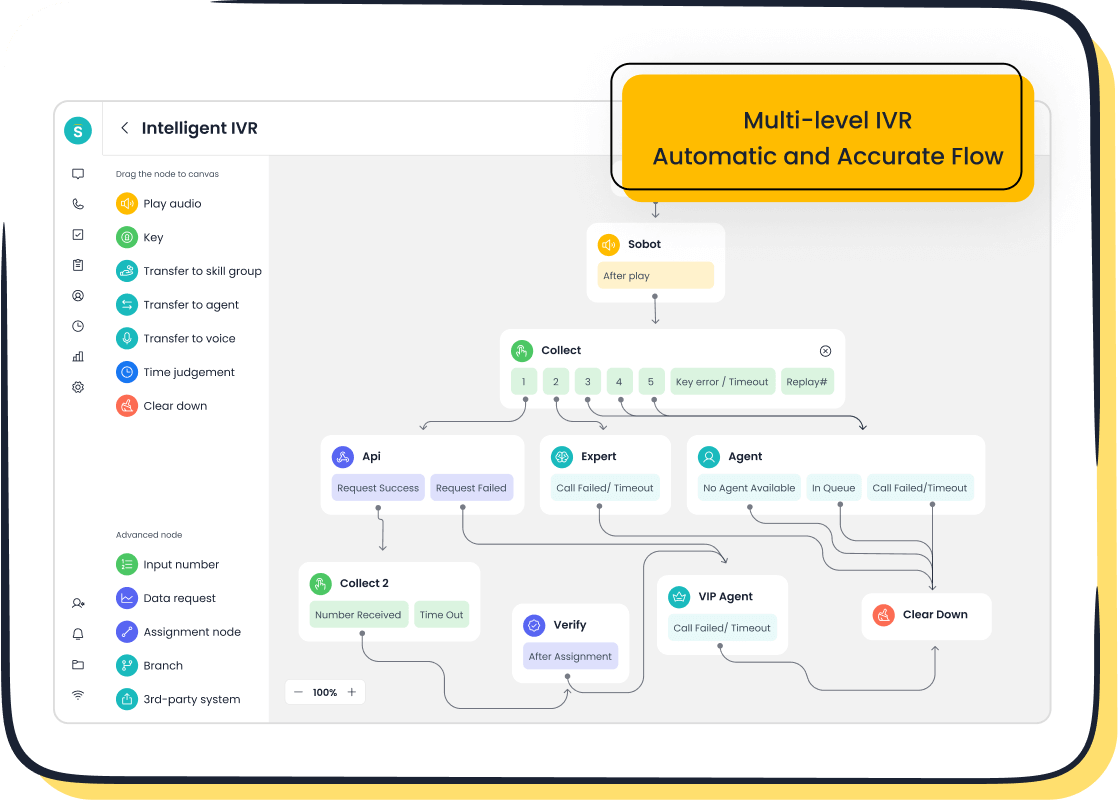
To achieve these results, you rely on tools like Sobot's Voice/Call Center. Its intelligent IVR and AI-powered voicebots streamline communication, making it easier to address customer needs quickly. These features not only enhance the customer experience but also improve operational efficiency. Businesses using journey mapping often see 50% higher customer retention rates, as reported by Forrester Research in 2023.
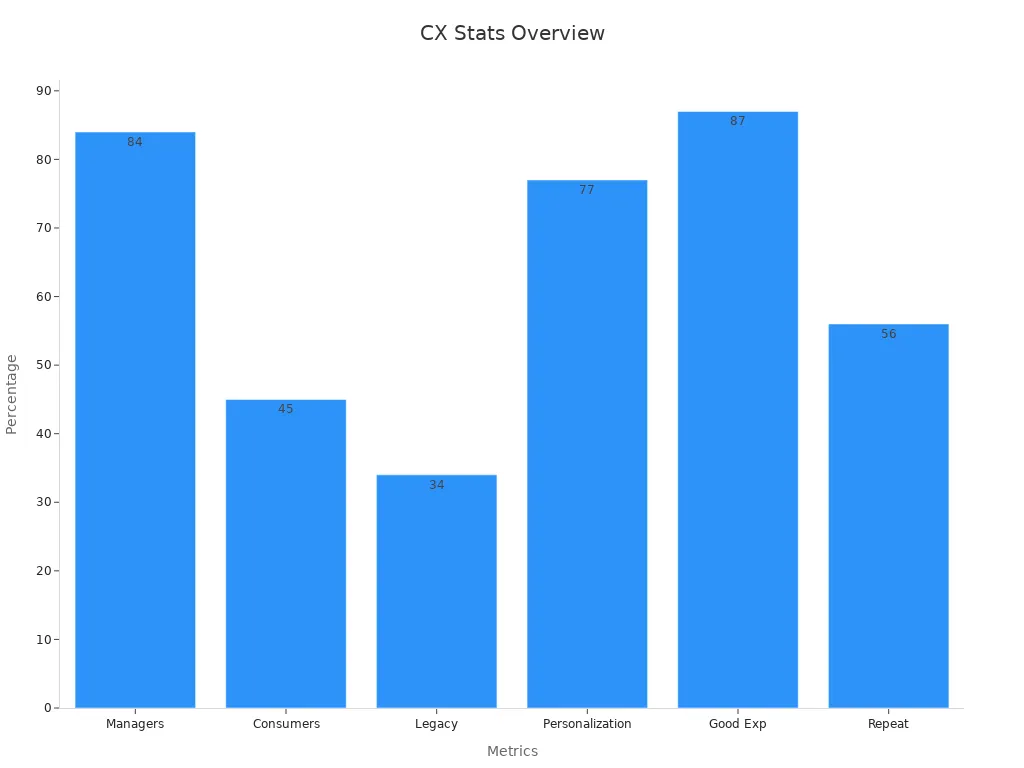
Driving Customer-Centric Product Development
As a CX Product Manager, you ensure that product development revolves around customer needs. This approach involves gathering feedback, analyzing data, and using insights to create products that solve real problems. Metrics like Net Promoter Score (NPS), Customer Satisfaction (CSAT), and Customer Effort Score (CES) guide your decisions. For instance, improving customer satisfaction by 20% can lead to a 15-25% increase in cross-sell rates, according to McKinsey.
Sobot's cx products, such as its AI-powered Voice/Call Center, support this goal by providing actionable insights through real-time analytics. These insights help you understand customer behavior and preferences, enabling you to design solutions that resonate with your audience. Companies that prioritize customer-centric development often experience higher retention rates and reduced churn, as demonstrated by the Cox case study.
Collaborating Across Teams for Seamless Experiences
Your role requires you to work closely with various departments, including sales, marketing, and support, to ensure a unified customer experience. When teams align their goals and share customer-centric metrics, they create a cohesive journey that keeps customers engaged. For example, organizations that prioritize collaboration report smoother customer interactions and higher satisfaction rates.
Sobot's Omnichannel Solution facilitates this collaboration by integrating multiple communication channels into a unified workspace. This platform allows teams to access customer data in real time, making it easier to resolve issues and deliver personalized experiences. Collaborative efforts also help anticipate potential problems, ensuring a seamless journey from start to finish.
Tip: When customer experience becomes everyone’s responsibility, your organization gains a competitive edge by keeping customers satisfied and loyal.
Measuring Success Through Customer Value Metrics
Measuring the success of your CX strategies requires a clear understanding of customer value metrics. These metrics provide actionable insights into how well your efforts align with customer expectations. By focusing on these indicators, you can identify areas for improvement and ensure your strategies deliver tangible results.
Key Metrics to Track
To evaluate the effectiveness of your CX initiatives, you should monitor three primary metrics:
| Metric | Description | Measurement Methodology |
|---|---|---|
| Net Promoter Score (NPS) | Measures customer loyalty based on likelihood to recommend. | Rating from 0 to 10, subtracting percentage of Detractors from Promoters. |
| Customer Satisfaction Score (CSAT) | Assesses customer satisfaction with products or services. | Rating scale from 1 to 5, calculating percentage of top 2 box ratings (4 and 5). |
| Customer Effort Score (CES) | Evaluates the effort required by customers to resolve issues. | Single survey question rating ease of resolution. |
These metrics offer a comprehensive view of customer perceptions. For example, a high NPS indicates strong loyalty, while a low CES suggests that your processes are easy to navigate. Together, they help you measure the overall success of your CX strategies.
Leveraging Tools for Accurate Measurement
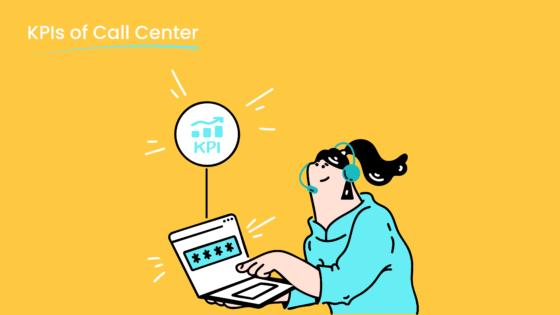
Accurate measurement of these metrics often requires advanced tools. Platforms like Sobot's Voice/Call Center simplify this process by providing real-time analytics and customer insights. For instance, the system's unified workspace consolidates customer data, making it easier to track satisfaction levels and resolution times. This integration ensures you can monitor key metrics without switching between multiple platforms.
By using cx products like Sobot's, you can also automate data collection and analysis. Features such as intelligent IVR and AI-powered voicebots streamline interactions, reducing customer effort and improving satisfaction. Businesses that adopt such tools often report higher NPS and CSAT scores, reflecting their ability to meet customer needs effectively.
Why Metrics Matter
Tracking customer value metrics is not just about numbers; it’s about understanding your customers. These metrics reveal how your strategies impact loyalty, satisfaction, and overall experience. For example, companies with high NPS scores grow at twice the rate of their competitors, according to Bain & Company. Similarly, improving CSAT by just 10% can lead to a 12% increase in customer retention.
Tip: Regularly review your metrics to identify trends and adjust your strategies. This proactive approach ensures you stay ahead in delivering exceptional customer experiences.
By focusing on these metrics and leveraging the right tools, you can create a customer-centric approach that drives both satisfaction and business growth.
Tools and Technologies Shaping CX Products
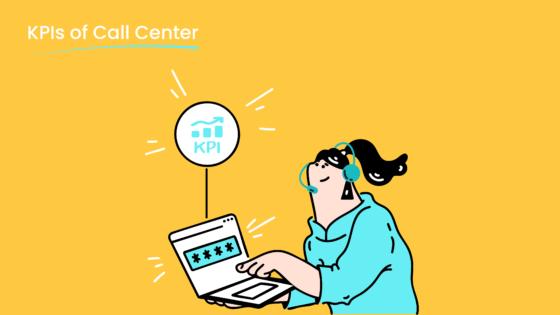
Leveraging AI and Automation in CX
AI and automation have revolutionized customer experience management. By 2025, 95% of customer interactions will involve AI in some capacity. This shift allows you to deliver faster, more personalized support while reducing operational costs. For example, agentic AI systems are expected to autonomously resolve 80% of common customer service issues by 2029, cutting costs by 30%.
Chatbots are a prime example of AI's impact. Approximately 80% of users are willing to interact with chatbots, especially when paired with live agent options. These tools handle repetitive queries, freeing agents to focus on complex issues. Companies like Netflix and Starbucks have successfully used AI for hyper-personalization. Netflix generates over $1 billion annually through its recommendation engine, while Starbucks tailors promotions based on customer preferences.
Automation also improves onboarding processes. Automated tools reduce onboarding drop-offs by 25% and shorten time to value (TTV) by 20%. These efficiencies enhance customer satisfaction and loyalty, making AI and automation indispensable in modern CX strategies.
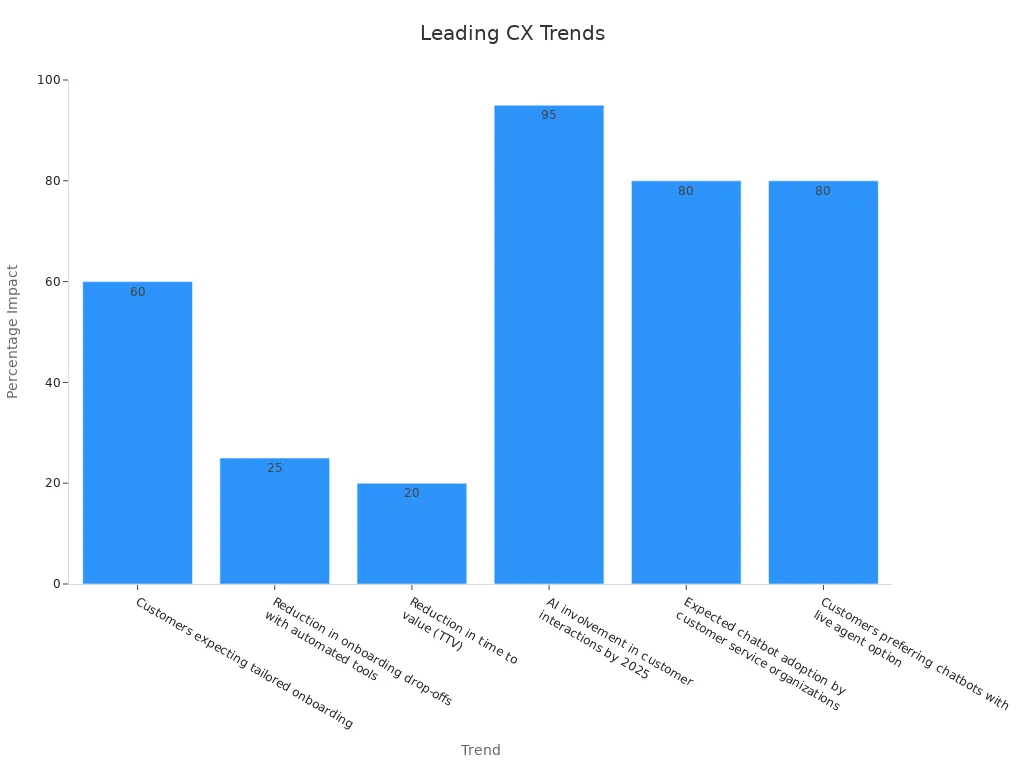
The Role of Platforms Like Sobot's Voice/Call Center
Platforms like Sobot's Voice/Call Center play a crucial role in shaping cx products. These platforms streamline communication, improve efficiency, and enhance customer satisfaction. Sobot's Voice/Call Center offers features like intelligent IVR, AI-powered voicebots, and real-time analytics. These tools enable you to deliver faster, more accurate support.

For instance, Sobot's platform reduces inbound discussion volume by 20% and achieves a customer satisfaction rate of over 95%. Its AI-powered voicebots handle routine queries, allowing agents to focus on more complex tasks. This approach leads to a 96% increase in positive feedback and an 85% problem resolution rate.
The platform's unified workspace consolidates customer data, making it easier to track interactions and resolve issues. This integration ensures a seamless experience across all touchpoints. By adopting platforms like Sobot's, you can enhance customer loyalty and drive business growth.
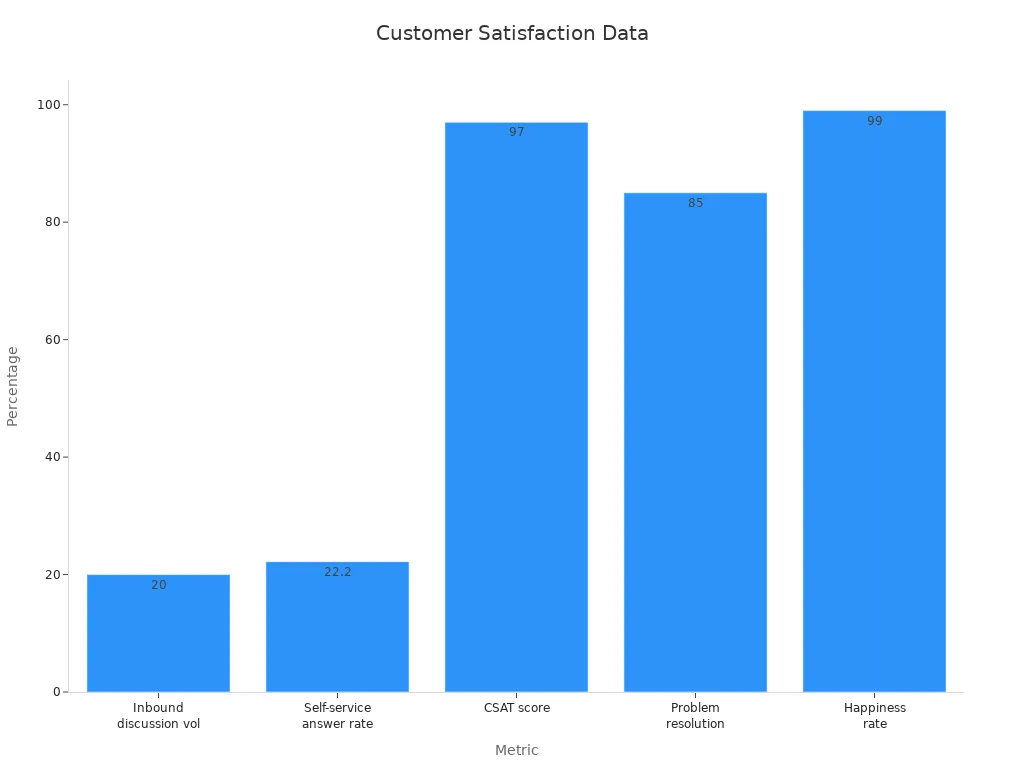
Essential Analytics Tools for Customer Insights
Analytics tools are essential for understanding customer behavior and improving cx products. These tools help you gather actionable insights, enabling data-driven decisions. Key methodologies include A/B testing, predictive analytics, and AI for data analysis.
Predictive analytics, for example, allows you to anticipate customer needs and tailor your strategies accordingly. Regression analysis predicts sales trends, while cluster analysis segments customers based on behavior. These techniques help you identify opportunities for personalization and growth.
Platforms like Sobot's Voice/Call Center simplify data collection and analysis. Its real-time analytics provide insights into customer satisfaction, resolution times, and interaction quality. This data helps you refine your strategies and deliver exceptional experiences. Businesses that leverage analytics tools often report higher retention rates and increased revenue, highlighting their importance in modern CX management.
Tip: Regularly review your analytics to identify trends and adjust your strategies. This proactive approach ensures you stay ahead in delivering exceptional customer experiences.
Emerging Technologies in Digital Transformation
Emerging technologies are reshaping how businesses deliver customer experiences. As a CX Product Manager in 2025, you must stay ahead of these advancements to remain competitive. These technologies not only enhance efficiency but also create opportunities for deeper customer engagement.
1. AI-Powered Personalization
Artificial intelligence (AI) has become a cornerstone of digital transformation. By 2025, AI tools will influence over 90% of customer interactions, according to Gartner. These tools analyze vast amounts of data to deliver personalized experiences. For example, AI can predict customer preferences, enabling you to offer tailored recommendations. This approach increases customer satisfaction by up to 35%, as reported by McKinsey.
Sobot's AI-powered Voice/Call Center exemplifies this trend. Its intelligent voicebots recognize customer intent and provide instant solutions. This reduces wait times and improves first-contact resolution rates. By integrating AI into your CX strategy, you can create experiences that feel uniquely tailored to each customer.
Tip: Use AI to anticipate customer needs. This proactive approach builds trust and loyalty.
2. Internet of Things (IoT) in CX
The Internet of Things (IoT) connects devices to create seamless interactions. By 2025, IoT-enabled devices will exceed 75 billion globally, according to Statista. These devices collect real-time data, helping you understand customer behavior. For instance, smart home devices can notify service teams about potential issues before customers even report them.
You can leverage IoT data to enhance customer support. Sobot's Omnichannel Solution integrates IoT insights into its unified workspace. This allows agents to access device data and resolve issues faster. Businesses using IoT in CX report a 20% increase in operational efficiency, as noted by Deloitte.
3. Augmented Reality (AR) and Virtual Reality (VR)
AR and VR are transforming how customers interact with brands. These technologies offer immersive experiences, making them ideal for industries like retail and gaming. For example, AR allows customers to visualize products in their homes before purchasing. VR creates virtual environments for training or product demonstrations.
By adopting AR and VR, you can engage customers in innovative ways. Imagine using AR to guide customers through complex setups or VR to provide virtual tours of your services. These tools not only enhance CX but also differentiate your brand in a crowded market.
4. Blockchain for Secure Transactions
Blockchain technology ensures secure and transparent transactions. This is especially important in industries like finance and e-commerce. Blockchain reduces fraud by creating tamper-proof records. It also enhances trust by providing customers with visibility into their transactions.
In CX, blockchain can streamline processes like identity verification. For example, a blockchain-based system can authenticate users without requiring multiple passwords. This simplifies the customer journey and improves satisfaction.
5. 5G Connectivity
The rollout of 5G networks is revolutionizing digital interactions. With speeds up to 100 times faster than 4G, 5G enables real-time communication. This technology supports high-quality video calls, instant data sharing, and seamless IoT integration.
Sobot's Voice/Call Center benefits from 5G by offering faster and more reliable connections. This ensures uninterrupted communication, even during peak times. By leveraging 5G, you can provide customers with faster, more responsive support.
Note: Faster connectivity means higher customer expectations. Ensure your systems are ready to deliver.
6. Natural Language Processing (NLP)
NLP allows machines to understand and respond to human language. This technology powers chatbots, voice assistants, and sentiment analysis tools. By 2025, NLP will handle 70% of customer queries, according to Forrester.
Sobot's AI-powered voicebots use NLP to interpret customer intent accurately. This enables you to provide quick, relevant responses. Businesses using NLP report a 25% reduction in handling times, improving both efficiency and satisfaction.
Emerging technologies like AI, IoT, AR, blockchain, 5G, and NLP are transforming customer experience management. By adopting these innovations, you can stay ahead of industry trends and deliver exceptional experiences. Platforms like Sobot's Voice/Call Center and Omnichannel Solution make it easier to integrate these technologies into your CX strategy. Embrace these advancements to create a future-ready approach to customer experience.
Actionable Insight: Regularly evaluate emerging technologies to identify those that align with your goals. Staying informed ensures you remain competitive in a rapidly evolving landscape.
Skills and Competencies for Future-Ready CX Product Managers
Empathy and Customer-Centric Thinking
Empathy is the cornerstone of effective customer experience management. As a CX Product Manager, you must understand customer emotions and needs to design solutions that resonate. Leaders who demonstrate compassion foster stronger psychological bonds, increasing employee engagement and customer satisfaction. For example, organizations that prioritize empathy report improved performance and trust, which directly impacts competitive advantage.
A customer-centric mindset ensures every decision aligns with customer expectations. This approach reduces friction in the customer journey and enhances loyalty. Tools like Sobot's Voice/Call Center help you achieve this by offering features such as AI-powered voicebots and intelligent IVR. These tools streamline interactions, making it easier to address customer concerns promptly. By focusing on empathy and customer-centricity, you can create experiences that leave lasting impressions.
| Impact Area | Evidence |
|---|---|
| Employee Engagement | Compassion strengthens psychological bonds, boosting commitment. |
| Organizational Performance | Trust and satisfaction improve competitive advantage. |
| Employee Well-being | Reduced burnout enhances productivity and overall health. |
| Crisis Management | Empathy during crises fosters a sense of togetherness. |
Data-Driven Decision Making
Data-driven decision-making is essential for managing CX products effectively. Metrics like First Response Time (FRT), Average Resolution Time (ART), and Customer Satisfaction Score (CSAT) provide actionable insights. For instance, reducing FRT by just 10% can significantly enhance customer satisfaction. As a CX Product Manager, you must analyze these metrics to identify trends and refine strategies.
Platforms like Sobot's Voice/Call Center simplify this process by consolidating data into a unified workspace. Real-time analytics allow you to monitor key metrics without switching between tools. This integration ensures you can make informed decisions quickly, improving both efficiency and customer outcomes. Businesses that adopt data-driven approaches often report higher retention rates and revenue growth.
| Metric | Description |
|---|---|
| First Response Time (FRT) | Measures how quickly a company acknowledges a customer inquiry. |
| Average Resolution Time (ART) | Tracks the total time it takes to fully resolve an issue. |
| First Contact Resolution (FCR) | Percentage of customer issues resolved during the first interaction. |
| Customer Satisfaction Score (CSAT) | Measures satisfaction with a specific interaction, product, or service. |
Communication and Cross-Functional Leadership
Effective communication and cross-functional leadership are vital for delivering seamless customer experiences. As a CX Product Manager, you must align teams across sales, marketing, and support to ensure consistency. Clear communication fosters collaboration, enabling teams to work toward shared goals. For example, organizations with strong cross-functional leadership report higher Net Promoter Scores (NPS) and customer retention rates.
Sobot's Omnichannel Solution supports this by integrating multiple communication channels into a unified workspace. This platform allows teams to access customer data in real time, reducing wait times and improving resolution rates. By leveraging such tools, you can enhance operational efficiency and strengthen customer loyalty.
| Performance Indicator | Category |
|---|---|
| Net Promoter Score (NPS) | Customer Satisfaction |
| Customer Satisfaction (CSAT) | Customer Satisfaction |
| Retention Rates | Customer Satisfaction |
| Revenue Growth | Business Impact |
| First Call Resolution | Operational Efficiency |
Tip: Regularly review team performance metrics to identify areas for improvement. Strong leadership ensures your teams stay aligned and focused on delivering exceptional customer experiences.
Continuous Learning and Adaptability
In 2025, the role of a CX Product Manager demands continuous learning and adaptability. Customer expectations evolve rapidly, and staying ahead requires you to embrace change and acquire new skills. The ability to adapt ensures you remain effective in delivering exceptional customer experiences.
Why Continuous Learning Matters
Technology and customer behavior shift constantly. For example, 73% of customers now expect companies to understand their unique needs, according to Salesforce. To meet these expectations, you must stay updated on emerging trends like AI, automation, and omnichannel solutions. Platforms like Sobot's Voice/Call Center provide tools that simplify this process. Features such as real-time analytics and AI-powered voicebots help you analyze customer interactions and identify areas for improvement.
Tip: Dedicate time each week to explore industry reports, attend webinars, or complete online courses. This habit keeps your skills sharp and relevant.
Adapting to Change with Agility
Adaptability is equally important. As a CX Product Manager, you often face unexpected challenges, such as shifts in customer behavior or new market demands. For instance, during the pandemic, businesses that quickly adopted digital tools saw a 20% increase in customer retention (McKinsey). Sobot's Omnichannel Solution supports this agility by integrating multiple communication channels into a unified workspace. This allows you to pivot strategies quickly and maintain seamless customer experiences.
Actionable Steps for Growth
- Stay Curious: Explore new technologies like AI and IoT to understand their impact on CX.
- Leverage Tools: Use platforms like Sobot's to gain insights and improve efficiency.
- Seek Feedback: Regularly review customer metrics like CSAT and NPS to refine your approach.
Note: Continuous learning and adaptability are not just skills; they are mindsets. Embrace them to thrive in the ever-changing world of customer experience.
Adapting to Future Challenges in CX

Navigating Shifts in Customer Behavior
Customer behavior is evolving rapidly, and staying ahead requires you to understand these changes. Customers now expect personalized services tailored to their preferences. For example, they value marketing strategies that resonate with their unique needs. Health-conscious consumers are also on the rise, prioritizing wellness in their purchasing decisions. Additionally, privacy concerns have grown, with customers favoring brands that emphasize transparency and data security.
Research shows that brands delivering superior customer experiences generate 5.7 times more revenue than competitors. However, meeting these expectations is increasingly challenging. Customer satisfaction scores dropped significantly in 2022, reflecting the difficulty of keeping pace with evolving demands. Tools like Sobot's Omnichannel Solution help you address these challenges by integrating customer data across channels. This ensures you can deliver personalized, secure, and seamless experiences that align with modern expectations.
Tip: Regularly analyze customer feedback to identify emerging trends and adapt your strategies accordingly.
Balancing Automation with Human-Centric Approaches
Automation has transformed customer experience management, but balancing it with human interaction is crucial. While AI-driven tools like Sobot's Voice/Call Center streamline processes, customers still value the human touch. For instance, 59% of consumers feel companies have lost the human element in CX. Striking the right balance ensures you meet customer expectations while maintaining efficiency.
Metrics like first response time (FRT) and customer sentiment (CSAT, NPS) help you evaluate this balance. AI can handle routine queries, reducing FRT and improving resolution quality. However, complex issues often require human intervention. Research from McKinsey highlights that AI-driven personalization can boost revenue by 5% to 15% and enhance efficiency by 10% to 30%. By combining automation with empathy, you can create a CX strategy that satisfies both operational goals and customer needs.
Note: Use AI to handle repetitive tasks, but ensure human agents are available for personalized support.
Scaling Operations with Tools Like Sobot's Omnichannel Solution
Scaling your CX operations effectively requires robust tools. Sobot's Omnichannel Solution simplifies this process by integrating communication channels into a unified workspace. This reduces system fragmentation and enhances efficiency. For example, smart integrations have cut waiting times by 35%, improving customer satisfaction.
Statistics reveal that 70% of Sobot’s contact center business comes from system upgrades, reflecting its reliability and scalability. Clients, including major fresh food e-commerce companies, have benefited from reduced disjointed system issues. By adopting such solutions, you can scale your operations while maintaining high service quality.
Actionable Insight: Invest in scalable tools like Sobot's Omnichannel Solution to meet growing customer demands without compromising efficiency.
Staying Ahead of Industry Trends and Innovations
Staying ahead of industry trends and innovations is essential for maintaining a competitive edge in customer experience (CX). The CX landscape evolves rapidly, driven by technological advancements and shifting customer expectations. As a CX Product Manager, you must anticipate these changes and adapt your strategies to meet future demands.
Companies that embrace innovation often achieve remarkable results. For example:
- Businesses integrating Unified Communications as a Service (UCaaS) and Contact Center as a Service (CCaaS) see a 95% greater year-over-year improvement in service costs.
- Organizations with strong CX strategies experience 1.5x higher revenue growth and 1.8x higher profitability than those that neglect CX.
These figures highlight the importance of staying proactive in adopting new technologies and refining your approach.
To stay ahead, you should focus on emerging tools and platforms that enhance CX. Solutions like Sobot's Voice/Call Center provide advanced features such as AI-powered voicebots and real-time analytics. These tools streamline communication, reduce operational costs, and improve customer satisfaction. For instance, Sobot's intelligent IVR system ensures faster resolutions, helping you meet customer needs more effectively.
Tip: Regularly monitor industry reports and customer feedback to identify trends. This practice helps you align your strategies with evolving expectations.
Adopting a forward-thinking mindset also involves exploring innovations like AI, IoT, and 5G connectivity. These technologies enable personalized, efficient, and secure customer interactions. By leveraging platforms like Sobot's Omnichannel Solution, you can integrate these advancements seamlessly into your operations. This approach not only enhances customer loyalty but also positions your business as a leader in CX innovation.
Actionable Insight: Invest in scalable, future-ready tools to ensure your CX strategies remain relevant and impactful.
The role of a CX Product Manager in 2025 is more critical than ever. You shape customer loyalty by delivering seamless experiences and leveraging data-driven insights. With 86% of buyers willing to pay more for better service, your work directly impacts business success. Positive customer interactions foster loyalty, repeat purchases, and recommendations, making your role indispensable.
To excel, focus on adaptability and continuous learning. Master tools like Sobot's Voice/Call Center to streamline operations and enhance customer satisfaction. Use AI-driven analytics to predict user behavior and refine strategies. Create customer journey maps to visualize pain points and opportunities. By aligning customer experiences with business goals, you can drive measurable outcomes.
Tip: Start with qualitative research to refine your approach, then use predictive analytics to anticipate customer needs. This proactive mindset ensures you stay ahead in a competitive landscape.
FAQ
What is the primary role of a CX Product Manager in 2025?
Your main role involves designing seamless customer journeys and ensuring satisfaction. You achieve this by leveraging tools like Sobot's Voice/Call Center, which offers features such as intelligent IVR and AI-powered voicebots. These tools help you streamline communication and improve customer loyalty.
How does Sobot's Voice/Call Center enhance customer experience?
Sobot's Voice/Call Center simplifies customer interactions with features like smart call routing and real-time analytics. Its AI-powered voicebots handle routine queries, reducing wait times. Businesses using this platform report a 96% increase in positive feedback and an 85% problem resolution rate.
Why are customer value metrics important for CX Product Managers?
Metrics like NPS, CSAT, and CES help you measure customer satisfaction and loyalty. For example, improving CSAT by 10% can boost retention by 12%. Tools like Sobot's Voice/Call Center provide real-time analytics, making it easier to track and improve these metrics.
How can CX Product Managers stay ahead of industry trends?
You can stay competitive by adopting emerging technologies like AI and IoT. Platforms like Sobot's Omnichannel Solution integrate these advancements, enabling you to deliver personalized and efficient customer experiences. Regularly reviewing industry reports and customer feedback also helps you adapt to changes.
What makes Sobot's solutions ideal for scaling CX operations?
Sobot's Omnichannel Solution integrates communication channels into a unified workspace, reducing fragmentation. Its scalability ensures you can handle growing customer demands without compromising service quality. For example, businesses using Sobot report a 35% reduction in waiting times and improved customer satisfaction.
See Also
Discovering Leading Cloud Contact Centers for 2025
Best 10 Customer Feedback Software Options for 2024
Transforming Support with AI-Powered Customer Service Agents
Essential Practices for Effective Call Center Quality Management
Ten Essential Steps for Omnichannel Contact Center Implementation